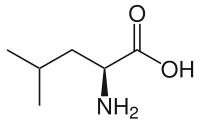Show answer
A1. From Fig. 1&2 we can see that protein synthesis continues for some time after inhibitor was added. That is caused by the fact that even when inhibitor is added and significant fraction of RNA Polymerase activity is halted, there is still a lot of "idle" or not yet used products of RNA Pol in the cell. This backup amount of RNAs is available for protein synthesis for short time. Answer is A.
A2. From Fig. 1 we can approximate rate of synthesis after inhibitor was added, and compare it to non-inhibited case. TO do that, let's just calculate derivative after inhibition, or slope of the lines. Take vertical distance (change in Counts Per minute, CPM), divide by change in time.
No inhibition: 6000-2000 / 20 hrs ~ 4000CPM/20min=200CPM/hr
With inhibition: 3000-2000 / 20 hrs ~ 50CPM/hr
After inhibition, rate goes down about 4x, thus we can estimate that inhibitor blocks about 75% of activity. Answer is B.
A3. In this question experiment was performed as following: proteins from nuclear extract were purified on a column. Peak were collected and used as a source for RNA polymerization. Since radioactive thymine was used, RNA polymerization activity of each fraction (peak) was measured afterwards.
In HeLa cells, there are 3 RNA polymerases:
RNA Pol I: synthesizes a pre-rRNA 45S, molecular weight 590 kDa
RNAPol II: synthesizes precursors of mRNAs and most snRNA and microRNAs, MW 550 kDa
RNA Pol III: synthesizes tRNAs, rRNA 5S and other small RNAs found in the nucleus and cytosol, MW 0.7MDa
Question is about type of the RNA Pol that is concentrated in first peak. Interestingly, Fig 3 gives much more information that asked in question, possibly setting up test-takers for a distraction. To answer, I had to Google RNA Pol chromatography, and it seems that peak 1 is mainly RNA Pol I.

But even more widely known is that nucleolus is a site where ribosomal RNA (rRNA) is primarily produced. Answer is A.












